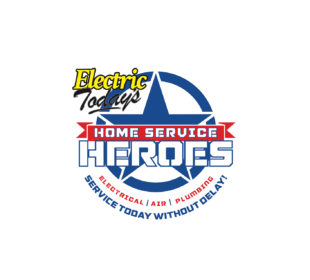Electricity is an integral part of our daily lives, powering our homes, workplaces, and many of our gadgets and devices. While electricity has become second nature to us, there are several myths and misconceptions that continue to persist, posing serious risks to both property and personal safety. In this blog, we will debunk six common electrical myths that you need to stop believing for the sake of your well-being.
Myth 1: Rubber-soled shoes make you immune to electric shocks.
One prevalent misconception is that wearing rubber-soled shoes provides insulation against electric shocks. While 100% pure rubber is indeed an insulator, many rubber-soled shoes (and gloves) do not contain 100% rubber. That being said, it does not offer sufficient protection from high-voltage shocks. In reality, the best way to avoid electric shocks is to practice proper electrical safety measures, such as avoiding contact with live wires and using insulated tools when necessary.
Myth 2: If a live wire falls, it will always produce sparks.
Just because a fallen wire doesn’t spark, it doesn’t mean that it’s safe. A live wire may not spark during its de-energization process, yet it remains hazardous to touch. Regardless of sparking upon falling, the wire might still retain its electrical charge and pose a fatal risk. It’s best to avoid touching or going near any fallen wire. Leave it to the pros to handle!
Myth 3: You can DIY electrical repairs without any risk.
Some individuals believe that they can save money by attempting electrical repairs without professional assistance. This myth not only puts the person attempting the repairs at risk but also poses a danger to others in the vicinity. Electrical work requires expertise, and even seemingly simple tasks can lead to electrical fires, electrocution, or other hazards if done incorrectly. Always consult a qualified electrician for any electrical repairs or installations.
Myth 4: Only old wiring can go bad.
Even a recently installed wiring system can experience issues if not properly installed. Regular maintenance is crucial for electrical wires, similar to other elements in a home, to prevent premature failure. Additionally, factors such as rodents gnawing on wires and circuit overloads can expedite the deterioration of new wiring.
Myth 5: Minimal voltage equates to minimal danger.
Fact: Contrary to the belief that low voltage implies limited harm, OSHA highlights that the severity of electrical injuries often extends beyond initial visibility. The true danger lies in the strength of the current. Even with low voltage, a robust current can inflict significant harm. Consequently, dealing with your electrical system should never be a DIY endeavor; it’s imperative to entrust such tasks to qualified professionals.
Myth 6: Wood serves as a natural insulator.
Be careful to believe anyone that tells you wood is a natural insulator. Many wooden ladders, for instance, may still incorporate metal components. While wood is a relatively poor conductor, it’s essential to exercise caution when working with live wires and using wooden structures, as they may not provide sufficient insulation.
Contact Home Services Heroes Today for All Your Electrical Needs in Tampa, FL and the Surrounding Areas
Believing in these electrical myths can have severe consequences, ranging from property damage to life-threatening injuries. It’s crucial to prioritize electrical safety by staying informed and following proper precautions. If you have doubts or concerns about electrical problems, always seek the expertise of a qualified electrician – like those at Home Service Heroes. Our team of experts will ensure your well-being and the well-being of those around you. By dispelling these dangerous electrical myths, we can create a safer environment and greatly reduce the risks associated with electricity in our daily lives. Contact Home Service Heroes today for all your electrical maintenance, repair, replacement, and installation needs.

